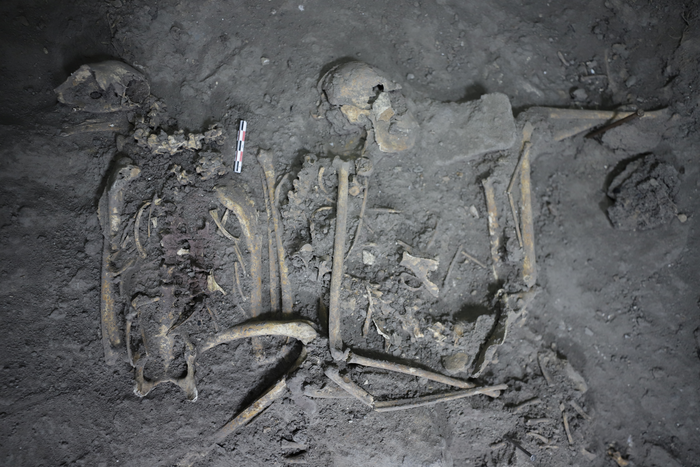Mayans brutally sacrificed spider monkey to maintain diplomatic relations, study finds
Findings debunk previous beliefs that Maya presence in Teotihuacán was restricted to migrant communities

A new analysis of the 1,700-year-old remains of a spider monkey unearthed in 2018 in the arid highlands of Mexico suggests the primate was presented as a gift by Maya elites to Teotihuacan – and later sacrificed to strengthen ties between the two pre-Hispanic American powerhouses.
Researchers, including those from the University of California Riverside in the US, suggest the monkey’s skeletal remains point to the earliest evidence of primate captivity, translocation and gift diplomacy between the Teotihuacán and Mayan elite.
In the study, published in the journal PNAS, scientists compared this ancient exercise to the gifting of the pandas Ling-Ling and Hsing-Hsing to the US by China in 1972 following president Richard Nixon’s state visit to that nation.
Unlike the pandas who were star attractions at the zoo where they lived, however, researchers explained that the 1,700-year-old spider monkey was likely buried alive with its hands tied.
“Hands bound behind its back and tethered feet indicate en vivo burial, common among human and animal sacrifices at Teotihuacan,” scientists wrote in the study.
At the excavation site at Plaza of Columns Complex, in Teotihuacán, Mexico, scientists also unearthed remains of other animals, as well as thousands of Maya-style mural fragments and over 14,000 ceramic sherds from a grand feast.
The remains included those of a golden eagle and several rattlesnakes, surrounded by unique artifacts such as fine greenstone figurines made of jade, shell/snail artifacts and lavish obsidian goods, including blades and projectile points.
The new findings debunk previous beliefs that Maya presence in Teotihuacán was restricted to migrant communities.
The unearthed animal remains and mural fragments also point to evidence of high diplomacy interaction between the two powerhouses over 1,700 years ago.
“Teotihuacán attracted people from all over, it was a place where people came to exchange goods, property, and ideas. It was a place of innovation,” study co-author Nawa Sugiyama from Arizona State University said.
“Finding the spider monkey has allowed us to discover reassigned connections between Teotihuacán and Maya leaders. The spider monkey brought to life this dynamic space, depicted in the mural art. It’s exciting to reconstruct this live history,” Dr Sugiyama said.
Based on the skeletal remains, scientists said the spider monkey was likely between five and eight years old at the time of death.
Analysis of two of the primate’s teeth suggests it ate maize and chili peppers, among other food items.
The study also indicates the spider monkey may have been held for at least two years in captivity, with the primate likely living in a humid environment before arriving in Teotihuacán, eating primarily plants and roots.
The new findings, scientists said, help better understand the principles of diplomacy during the times of these powerhouses.
“Teotihuacán was a successful system for over 500 years, understanding past resilience, its strengths and weaknesses are relevant in today’s society. There are many similarities then and now. Lessons can be seen and modeled from past societies; they provide us with cues as we go forward,” Dr Sugiyama added.
Join our commenting forum
Join thought-provoking conversations, follow other Independent readers and see their replies
Comments
Bookmark popover
Removed from bookmarks